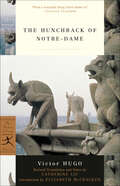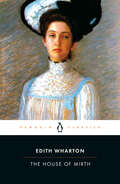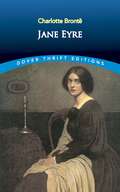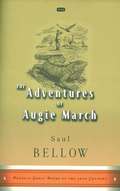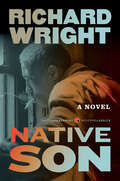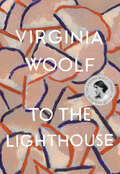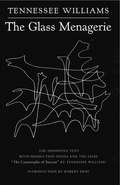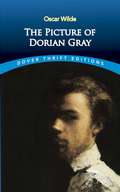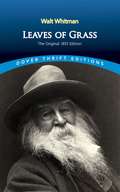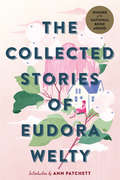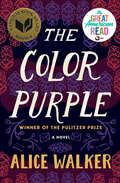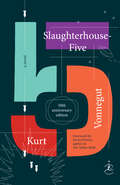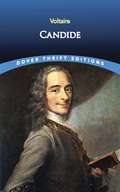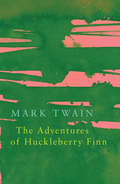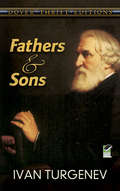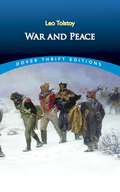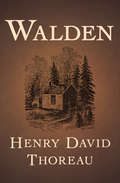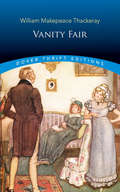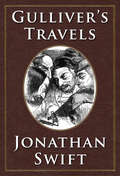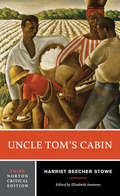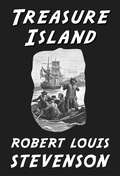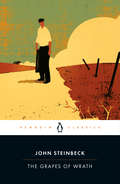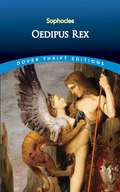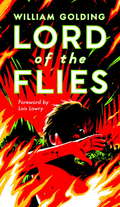Special Collections
College Board's 100 Books for College-Bound Readers
- Table View
- List View
The Hunchback of Notre-Dame
by Victor Hugo and Elizabeth Mccracken and Catherine LiuThe story and characters in Victor Hugo's The Hunchback of Notre-Dame have resonated with succeeding generations since its publication in 1831.
It has tempted filmmakers, and most recently animators, who have exploited its dramatic content to good effect but have inevitably lost some of the grays that make the original text so compelling.
From Victor Hugo's flamboyant imagination came Quasimodo, the grotesque bell ringer; La Esmeralda, the sensuous gypsy dancer; and the haunted archdeacon Claude Frollo. Hugo set his epic tale in the Paris of 1482 under Louis XI and meticulously re-created the day-to-day life of its highest and lowest inhabitants. Written at a time of perennial political upheaval in France, The Hunchback of Notre-Dame is the product of an emerging democratic sensibility and prefigures the teeming masterpiece Les Misérables, which Hugo would write thirty years later. He made the cathedral the centerpiece of the novel and called it Notre-Dame de Paris. (It received its popular English title at the time of its second translation in 1833.)
Hugo wrote that his inspiration came from a carving of the word "fatality" in Greek that he had found in the cathedral. The inscription had been eradicated by the time the book was published, and Hugo feared that Notre-Dame's Gothic splendor might soon be lost to the contemporary fad for tearing down old buildings. Notre-Dame has survived as one of the great monuments of Paris, and Hugo's novel is a fitting celebration of it, a popular classic that is proving to be just as enduring.
The House of Mirth
by Edith WhartonAn immensely popular bestseller upon its publication in 1905, The House of Mirth was Edith Wharton’s first great novel. Set among the elegant brownstones of New York City and opulent country houses like gracious Bellomont on the Hudson, the novel creates a satiric portrayal of what Wharton herself called “a society of irresponsible pleasure-seekers” with a precision comparable to that of Proust. And her brilliant and complex characterization of the doomed Lily Bart, whose stunning beauty and dependence on marriage for economic survival reduce her to a decorative object, becomes an incisive commentary on the nature and status of women in that society. From her tragic attraction to bachelor lawyer Lawrence Selden to her desperate relationship with social-climbing Rosedale, Lily is all too much a product of the world indicated by the title, a phrase taken from Ecclesiastes: “The heart of fools is in the house of mirth.” For it is Lily’s very specialness that threatens the elegance and fulfillment she seeks in life. Along with the author’s other masterpiece, The Age of Innocence, this novel claims a place among the finest American novels of manners.
Jane Eyre
by Charlotte BrontëCharlotte Brontë characterized the eponymous heroine of her 1847 novel as being "as poor and plain as myself."
Presenting a heroine with neither great beauty nor entrancing charm was an unprecendented maneuver, but Brontë's instincts proved correct, for readers of her era and ever after have taken Jane Eyre into their hearts.
The author drew upon her own experience to depict Jane's struggles at Lowood, an oppressive boarding school, and her troubled career as a governess.
Unlike Jane, Brontë had the advantage of a warm family circle that shared and encouraged her literary pursuits.
She found immediate success with this saga of an orphan girl forced to make her way alone in the world, from Lowood School to Thornfield, the estate of the majestically moody Mr. Rochester, and beyond.
A selection of the Common Core State Standards Initiative.
The Adventures of Augie March
by Saul BellowOriginally published in 1953, Saul Bellow's modern picaresque tale grandly illustrates twentieth-century man's restless pursuit of an elusive meaning.
Augie March, a young man growing up in Chicago during the Great Depression, doesn't understand success on other people's terms.
Fleeing to Mexico in search of something to fill his restless soul and soothe his hunger for adventure, Augie latches on to a wild succession of occupations until his journey brings him full circle.
Yet beneath Augie's carefree nature lies a reflective person with a strong sense of responsibility to both himself and others, who in the end achieves a success of his own making.
A modern-day Columbus, Augie March is a man searching not for land but for self and soul and, ultimately, for his place in the world.
Winner of the National Book Award
[This text is listed as an example that meets Common Core Standards in English language arts in grades 11-12 at http://www.corestandards.org.]
Native Son
by Richard WrightRight from the start, Bigger Thomas had been headed for jail. It could have been for assault or petty larceny; by chance, it was for murder and rape.
Native Son tells the story of this young black man caught in a downward spiral after he kills a young white woman in a brief moment of panic.
Set in Chicago in the 1930s, Wright's powerful novel is an unsparing reflection on the poverty and feelings of hopelessness experienced by people in inner cities across the country and of what it means to be black in America.
To the Lighthouse
by Virginia WoolfThe subject of this extraordinary novel is the daily life of an English family in the Hebrides.
The Glass Menagerie
by Tennessee Williams and Robert BrayNo play in the modern theatre has so captured the imagination and heart of the American public as Tennessee Williams's The Glass Menagerie.
Menagerie was Williams's first popular success and launched the brilliant, if somewhat controversial, career of our pre-eminent lyric playwright.
Since its premiere in Chicago in 1944, with the legendary Laurette Taylor in the role of Amanda, the play has been the bravura piece for great actresses from Jessica Tandy to Joanne Woodward, and is studied and performed in classrooms and theatres around the world.
The Glass Menagerie (in the reading text the author preferred) is now available only in its New Directions Paperbook edition.
A new introduction by prominent Williams scholar Robert Bray, editor of The Tennessee Williams Annual Review, reappraises the play more than half a century after it won the New York Drama Critics Circle Award: "More than fifty years after telling his story of a family whose lives form a triangle of quiet desperation, Williams's mellifluous voice still resonates deeply and universally."
This edition of The Glass Menagerie also includes Williams's essay on the impact of sudden fame on a struggling writer, "The Catastrophe of Success," as well as a short section of Williams's own "Production Notes."
The cover features the classic line drawing by Alvin Lustig, originally done for the 1949 New Directions edition.
The Picture of Dorian Gray
by Oscar WildeIn this celebrated work, his only novel, Wilde forged a devastating portrait of the effects of evil and debauchery on a young aesthete in late-19th-century England.
Combining elements of the Gothic horror novel and decadent French fiction, the book centers on a striking premise: As Dorian Gray sinks into a life of crime and gross sensuality, his body retains perfect youth and vigor while his recently painted portrait grows day by day into a hideous record of evil, which he must keep hidden from the world.
For over a century, this mesmerizing tale of horror and suspense has enjoyed wide popularity.
It ranks as one of Wilde's most important creations and among the classic achievements of its kind.
Leaves of Grass
by Walt WhitmanIn 1855, Walt Whitman published — at his own expense — the first edition of Leaves of Grass, a visionary volume of twelve poems. Showing the influence of a uniquely American form of mysticism known as Transcendentalism, which eschewed the general society and culture of the time, the writing is distinguished by an explosively innovative free verse style and previously unmentionable subject matter. Exalting nature, celebrating the human body, and praising the senses and sexual love, the monumental work was condemned as "immoral." Whitman continued evolving Leaves of Grass despite the controversy, growing his influential work decades after its first appearance by adding new poems with each new printing. This edition presents the original twelve poems from Whitman's premier 1855 publication of Leaves of Grass. Included are some of the greatest poems of modern times: "Song of Myself," "I Sing the Body Electric," and "There Was a Child Went Forth" (which in the first editions of Leaves of Grass were still nameless), works that continue to upset conventional notions of beauty and originality even today.
The Collected Stories of Eudora Welty
by Eudora WeltyThis complete collection includes all the published stories of Eudora Welty.
There are forty-one stories in all, including the earlier collections A Curtain of Green, The Wide Net, The Golden Apples, and The Bride of the Innisfallen, as well as previously uncollected stories.
With a Preface written by the Author especially for this edition.
The Color Purple
by Alice WalkerThe Pulitzer Prize– and National Book Award–winning novel is now a new, boldly reimagined film from producers Oprah Winfrey and Steven Spielberg, starring Taraji P. Henson, Danielle Brooks, and Fantasia Barrino.A PBS Great American Read Top 100 Pick Celie has grown up poor in rural Georgia, despised by the society around her and abused by her own family. She strives to protect her sister, Nettie, from a similar fate, and while Nettie escapes to a new life as a missionary in Africa, Celie is left behind without her best friend and confidante, married off to an older suitor, and sentenced to a life alone with a harsh and brutal husband. In an attempt to transcend a life that often seems too much to bear, Celie begins writing letters directly to God. The letters, spanning 20 years, record a journey of self-discovery and empowerment guided by the light of a few strong women. She meets Shug Avery, her husband&’s mistress and a jazz singer with a zest for life, and her stepson&’s wife, Sofia, who challenges her to fight for independence. And though the many letters from Celie&’s sister are hidden by her husband, Nettie&’s unwavering support will prove to be the most breathtaking of all.The Color Purple has sold more than five million copies, inspired an Academy Award-nominated film starring Oprah Winfrey and directed by Steven Spielberg, and been adapted into a Tony-winning Broadway musical. Lauded as a literary masterpiece, this is the groundbreaking novel that placed Walker &“in the company of Faulkner&” (The Nation), and remains a wrenching—yet intensely uplifting—experience for new generations of readers.This ebook features a new introduction written by the author on the 25th anniversary of publication, and an illustrated biography of Alice Walker including rare photos from the author&’s personal collection. The Color Purple is the 1st book in the Color Purple Collection, which also includes The Temple of My Familiar and Possessing the Secret of Joy.
Slaughterhouse Five or the Children’s Crusade
by Kurt Vonnegut Jr.Slaughterhouse-Five, an American classic, is one of the world's great anti-war books.
Centering on the infamous firebombing of Dresden, Billy Pilgrim's odyssey through time reflects the mythic journey of our own fractured lives as we search for meaning in what we fear most.
Candide
by Voltaire and Francois-Marie ArouetCaustic and hilarious, Candide has ranked as one of the world's great satires since its first publication in 1759.
It concerns the adventures of the youthful Candide, disciple of Dr. Pangloss, who was himself a disciple of Leibniz.
In the course of his travels and adventures in Europe and South America, Candide saw and suffered such misfortune that it was difficult for him to believe this was "the best of all possible worlds" as Dr. Pangloss had assured him.
Indeed, it seemed to be quite the opposite. In brilliantly skewering such naïveté, Voltaire mercilessly exposes and satirizes romance, science, philosophy, religion, and government -- the ideas and forces that permeate and control the lives of men.
After many trials and travails, Candide is reunited with Cunegonde, his sweetheart.
He then buys a little farm in Turkey where he and Cunegonde, Dr. Pangloss and others all retire. In the end, Candide decides that the best thing in the world is to cultivate one's own garden.
A selection of the Common Core State Standards Initiative.
The Adventures of Huckleberry Finn
by Mark TwainTo escape from his abusive father, 13-year-old Huckleberry Finn fakes his own death and floats away on a raft down the Mississippi with Jim, a runaway slave.
In a series of unforgettable adventures narrated by Huck, they encounter a cross-section of characters from slave-hunters, thieves and conmen to feuding aristocrats and even some relatives of Tom Sawyer.
It is still considered by some as one of the great American novels of all-time.
Fathers and Sons
by Ivan TurgenevConsidered one of Ivan Turgenev's finest works, Fathers and Sons was the first of the great nineteenth-century Russian novels to achieve international renown.
A stirring tale of generational conflict during a period of social revolution, it vividly depicts the friction between liberal and conservative thought and the rise of the radical new philosophy of nihilism. Set in Russia during the 1860s against the backdrop of the liberation of the serfs, the story concerns the clash of older aristocrats with the new democratic intelligentsia.
The impressionable young student Arkady Kirsanoff arrives home in the company of his friend Bazarov, a cynical biologist. Arkady's father and uncle, already distressed by the upheaval of the peasants, grow increasingly irritated at Bazarov's outspoken nihilism and his ridicule of the conventions of state, church, and home. The young friends, bored by the rustic life of the Kirsanoff estate, venture off to the provincial capital in search of amusement. There they encounter both romance and alienation.
War and Peace
by Leo TolstoyHailed as one of the greatest novels of all time and a classic of world literature, War and Peace unfolds in the early nineteenth century during the turbulent years of the Napoleonic invasion of Russia.
Tolstoy's epic ranges from stirring depictions of historical events to intimate portraits of family life, moving between public spectacles and private lives to offer a tale of both panoramic scope and closely observed detail.
From the breathless excitement of 16-year-old Natasha Rostov's first ball, to Prince Andrei Bolkonsky's epiphany on the battlefield at Austerlitz, the novel abounds in memorable incidents, particularly those involving Pierre Bezukhov.
A seeker after moral and spiritual truths, Pierre and his search for life's deeper meaning stand at the heart of this monumental book.
A tale of strivers in a world fraught with conflict, social and political change, and spiritual confusion, Tolstoy's magnificent work continues to entertain, enlighten, and inspire readers around the world.
Walden
by Henry David ThoreauAn American masterwork in praise of nature, self-reliance, and the simple lifeI went to the woods because I wished to live deliberately, to front only the essential facts of life, and see if I could not learn what it had to teach, and not, when I came to die, discover that I had not lived.
In 1845, the transcendentalist Henry David Thoreau moved from his home in the town of Concord, Massachusetts, to a small cabin he built by hand on the shores of Walden Pond.
He spent the next two years alone in the woods, learning to live self-sufficiently and to take his creative and moral inspiration from nature. P
art memoir, part philosophical treatise, part environmental manifesto, Walden is Thoreau's inspirational account of those extraordinary years and one of the most influential books ever written.
Vanity Fair
by William Makepeace ThackeraySubtitled "a novel without a hero," Vanity Fair offers an acidly satirical romp across all levels of English society during the Napoleonic wars.
William Thackeray focuses on how the war affects people other than soldiers, the typical heroes.
All of his characters are deeply flawed, from social climber Becky Sharp and sweet Amelia Sedley to caddish George Osborne and loyal William Dobbin.
Becky, liar and hypocrite, takes center stage as one of literature's great female protagonists.
Penniless, armed with only her beauty, charm, and cunning, she claws her way forward by practicing the corrupt principles of her world.
Becky seduces her enemies and betrays friends with a charismatic energy that has captivated generations of readers.
Regarded as Thackeray's best novel and masterpiece, Vanity Fair was published in serial form in 1847-48 in Punch and established the author's literary reputation as well as his social status and financial security.
Critic A. E. Dyson acclaimed it as "one of the world's most devious novels, devious in its characterization, its irony, its explicit moralizing, its exuberance, its tone.
Few novels demand more continuing alertness from the reader, or offer more intellectual and moral stimulation in return."
Gulliver's Travels
by Jonathan SwiftSatirist Jonathan Swift's best known work is the prose satire, Gulliver's Travels, first published in 1726.
It is both a satire on human nature and the "travellers' tales" literary subgenre.
It tells the story of Lemuel Gulliver and his fantastic journeys.
A series of seafaring misadventures take Gulliver to a variety of imagined lands, where he meets the tiny Lilliputians, the enormous Brobdingnagians and many other curious peoples.
He is embroiled in political intrigue everywhere he goes, all of which is Swift's comic allegory for religious, political and social events of the day in Europe.
Never out of print since its first publication, Gulliver's Travels continues to delight readers today.
Swift himself claimed that he wrote Gulliver's Travels "to vex the world rather than divert it".
Uncle Tom's Cabin
by Harriet Beecher Stowe and Elizabeth AmmonsSelling more than 300,000 copies the first year it was published, Stowe's powerful abolitionist novel fueled the fire of the human rights debate in 1852.
Denouncing the institution of slavery in dramatic terms, the incendiary novel quickly draws the reader into the world of slaves and their masters.
Stowe's characters are powerfully and humanly realized in Uncle Tom, a majestic and heroic slave whose faith and dignity are never corrupted; Eliza and her husband, George, who elude slave catchers and eventually flee a country that condones slavery; Simon Legree, a brutal plantation owner; Little Eva, who suffers emotionally and physically from the suffering of slaves; and fun-loving Topsy, Eva's slave playmate.
Critics, scholars, and students are today revisiting this monumental work with a new objectivity, focusing on Stowe's compelling portrayal of women and the novel's theological underpinnings.
This Norton Critical Edition includes:
The 1852 first book edition, accompanied by Elizabeth Ammons’s preface, note on the text, and explanatory annotations.
Twenty-two illustrations.
A rich selection of historical documents on slavery and abolitionism.
Seventeen critical reviews spanning more than 160 years.
A Chronology, A Brief Time Line of Slavery in America, and an updated Selected Bibliography.
Treasure Island
by Robert Louis StevensonYoung Jim Hawkins, while running the Benbow Inn with his mother, comes into possession of a treasure map left by the unfortunate Captain Billy Bones.
So begins a journey that will take Jim and a rowdy band of buccaneers to Treasure Island.
Robert Louis Stevenson's classic adventure was published in 1883 and exerted an enormous influence on the popular perceptions of pirates, including such elements as treasure maps marked with an "X", schooners, the Black Spot, tropical islands, and one-legged seamen bearing parrots on their shoulders.
The Grapes of Wrath
by John Steinbeck and Robert DemottThe Pulitzer Prize-winning epic of the Great Depression, a book that galvanized--and sometimes outraged--millions of readers.
First published in 1939, Steinbeck's Pulitzer Prize-winning epic of the Great Depression chronicles the Dust Bowl migration of the 1930s and tells the story of one Oklahoma farm family, the Joads-driven from their homestead and forced to travel west to the promised land of California. Out of their trials and their repeated collisions against the hard realities of an America divided into Haves and Have-Nots evolves a drama that is intensely human yet majestic in its scale and moral vision, elemental yet plainspoken, tragic but ultimately stirring in its human dignity.
A portrait of the conflict between the powerful and the powerless, of one man's fierce reaction to injustice, and of one woman's stoical strength, the novel captures the horrors of the Great Depression and probes into the very nature of equality and justice in America.
The Grapes of Wrath summed up its era in the way that Uncle Tom's Cabin summed up the years of slavery before the Civil War. Sensitive to fascist and communist criticism, Steinbeck insisted that "The Battle Hymn of the Republic" be printed in its entirety in the first edition of the book--which takes its title from the first verse: "He is trampling out the vintage where the grapes of wrath are stored." At once a naturalistic epic, captivity narrative, road novel, and transcendental gospel, Steinbeck's powerful landmark novel is perhaps the most American of American Classics.
This edition contains an introduction and notes by Steinbeck scholar Robert Demott.
Oedipus Rex
by SophoclesConsidered by many the greatest of the classic Greek tragedies, Oedipus Rex is Sophocles' finest play and a work of extraordinary power and resonance.
Aristotle considered it a masterpiece of dramatic construction and refers to it frequently in the Poetics.
In presenting the story of King Oedipus and the tragedy that ensues when he discovers he has inadvertently killed his father and married his mother, the play exhibits near-perfect harmony of character and action.
Moreover, the masterly use of dramatic irony greatly intensifies the impact of the agonizing events and emotions experienced by Oedipus and the other characters in the play.
Now these and many other facets of this towering tragedy may be studied and appreciated in Dover's attractive inexpensive edition of one of the great landmarks of Western drama.
A selection of the Common Core State Standards Initiative.
Antigone
by Paul Woodruff SophoclesWoodruff's work with Peter Meineck makes this text one that is accessible to today's students and could be staged for modern audiences. Line notes printed at the bottom of the page bring a reader further quick assistance. . . .
The choral odes as rendered here deserve special notice. After giving a succinct analysis of each in his introduction, Woodruff translates the lyrics into English that is both poetic and comprehensible. . . .
Woodruff's rendering of the dialogue moves along easily; these are lines that any contemporary Antigone, Creon or Haemon might speak. Antigone's words on the gods' unwritten laws keep close to the Greek and yet would be authentic for a modern speaker. . . .
Woodruff's introduction is a strong, clear, and clever blend of basic traditional information (to those who know Greek tragedy) and fresh insights. . . .
Lord of the Flies
by William Golding and E. L. EpsteinBefore The Hunger Games there was Lord of the Flies
Lord of the Flies remains as provocative today as when it was first published in 1954, igniting passionate debate with its startling, brutal portrait of human nature.
Though critically acclaimed, it was largely ignored upon its initial publication.
Yet soon it became a cult favorite among both students and literary critics who compared it to J.D. Salinger's The Catcher in the Rye in its influence on modern thought and literature.
William Golding's compelling story about a group of very ordinary small boys marooned on a coral island has become a modern classic.
At first it seems as though it is all going to be great fun; but the fun before long becomes furious and life on the island turns into a nightmare of panic and death.
As ordinary standards of behaviour collapse, the whole world the boys know collapses with them--the world of cricket and homework and adventure stories--and another world is revealed beneath, primitive and terrible.
Labeled a parable, an allegory, a myth, a morality tale, a parody, a political treatise, even a vision of the apocalypse, Lord of the Flies has established itself as a true classic.
